- Home
Italy
Excursions in Italy (Po)
With CroisiEurope, it's a true holiday in Italy with fascinating art, culture and romance. Because if Italy is a lot of things, it is above all a rare pearl and a mausoleum in honour of Mankind and what he is capable of. Centuries past by and artistic trends have crossed and transfigured Italy, formerly an Empire, then the heart of the Renaissance, and still today the country of love and passion. We offer you all of this on our cruise on the Po.
The program includes an in-depth visit of Venice, from the darkest secrets of the opulent Doge's Palace to the narrow streets of this urban labyrinth. Our guides will take you to the heart of the Serenissima and you will meet gondolier artisans and handmade masks. Then your trip will take you to the islands of Murano and Burano, simply unmissable, as much for their masterpieces of lace and glassware as for their fishing villages with vibrant colours.
Continuing your journey inland, along the Po, you will also visit the romantic Verona. Its arena, its cobbled streets, its old town served as a backdrop to the famous passion that linked Romeo to Juliet. Even today, visitors come to see the balcony from where Juliet looked down to her lover.
Discover all these treasure and fabulous destinations with our cruise on the Po.
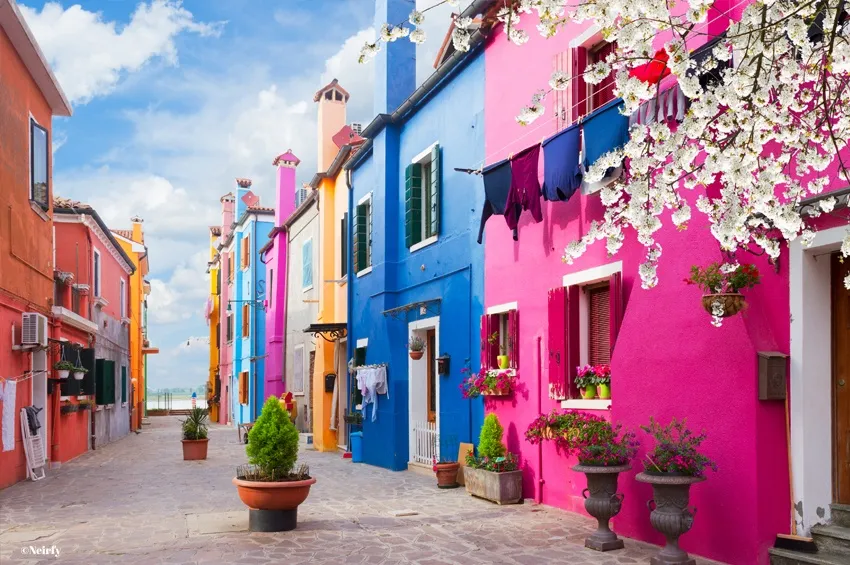
You'll set out on foot for the island of Burano. Located outside of the hustle and bustle in the city, Burano is famous for its colorful homes and lacemaking. This photographer's paradise effuses particular charm and invites each visitor to discover its delights. As your tour guide accompanies you down its picturesque streets, you'll see Bepi Suà's kaleidoscopic house, Gianfranco Rosso's home, the adorable Ponte dei Tre Ponti— one of the island's most beautiful spots—the crooked belfry, and so much more. You'll then discover the Venissa Vineyard on the island of Mazzorbo. Just one bridge separates Burano from this small hidden vineyard. The story began almost 15 years ago when Gianluca Bisol noticed a vineyard in a garden adjacent to the church.
Upon analysis of the vines, he discovered they belonged to the Dorona variety—the wine once served at the banquets within Doge's Palace.
The tide peaks occurring naturally in the area (acqua alta) flood the vineyard with salt water, which influences certain characteristics in the Venissa wines. As you visit the grounds, your guide will explain the biodynamic techniques this small winemaker uses to make their pesticide- and insecticide-free products. Of course, we’ll finish up our tour with a tasting.
PLEASE NOTE
- The order of the visits can change.
- Times are approximate.
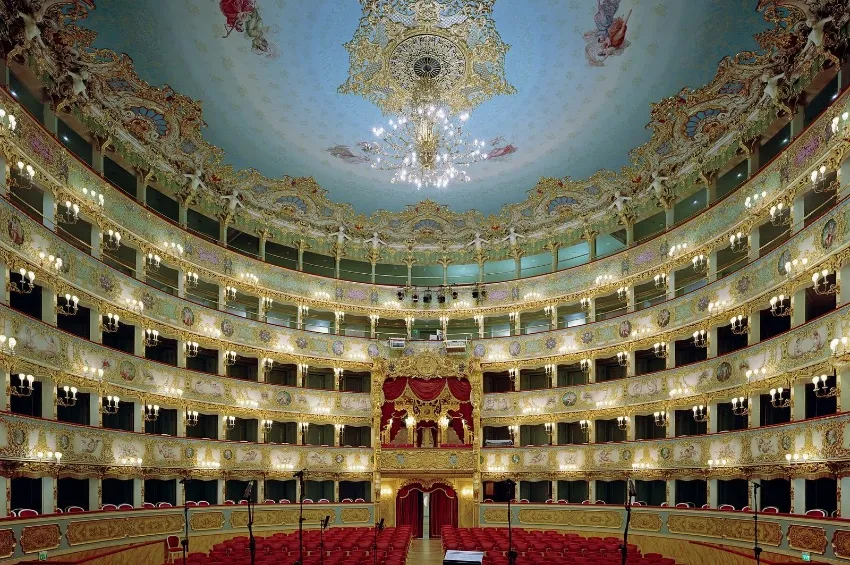
Departure on foot from Seven Martyrs Quay with a local guide for La Fenice theater. This opera house was built in Venice in the 18th century in the neo-classical style. The auditorium has five levels of balconies finely decorated in red and gold. It is, with La Scala in Milan and the San Carlo Theater in Naples, one of the most prestigious temples of Italian opera. La Fenice has seen the creation of the most beautiful operas of Verdi, Rossini, Bellini and many others. You'll be able to enjoy some free time or return on board in the company of your guide.
Duration : approx. 2:30
- The theatre is 45 minutes' walk from the quay - possibility of taking the vaporetto (extra charge, payable on site)
- Good walking shoes are recommended.
- The order of the visits can change.
- Times are approximate.
- These excursions are not proposed for all the cruises and depend on the itinerary.
- The excursions on the first evening and the morning following boarding are only guaranteed for the passengers who have booked the excursion before the cruise.
- If the minimum of 25 participants is not reached, the excursion may be either cancelled or proposed at another rate, depending on the number of participants (to be paid for on board).
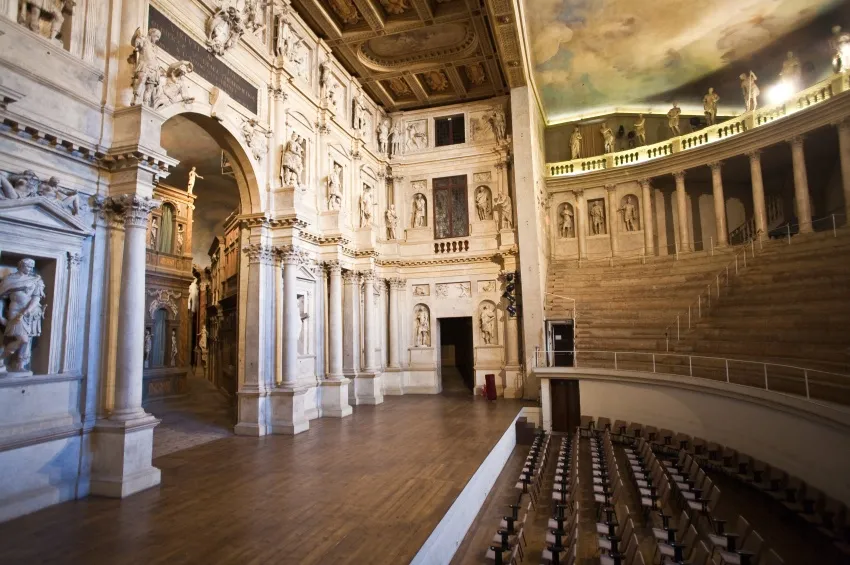
Vicenza is the epitome of gorgeous Italian landscapes, art, food, and wine. The most beautiful buildings in the city are found around the Piazza dei Signori. Here, you can take in the beautiful facade of the Teatro Olimpico, which opened in 1585 and contains the oldest standing stage set still in existence.
PLEASE NOTE
- Must be booked in advance.
- The order of the visits can change.
- Times are approximate.
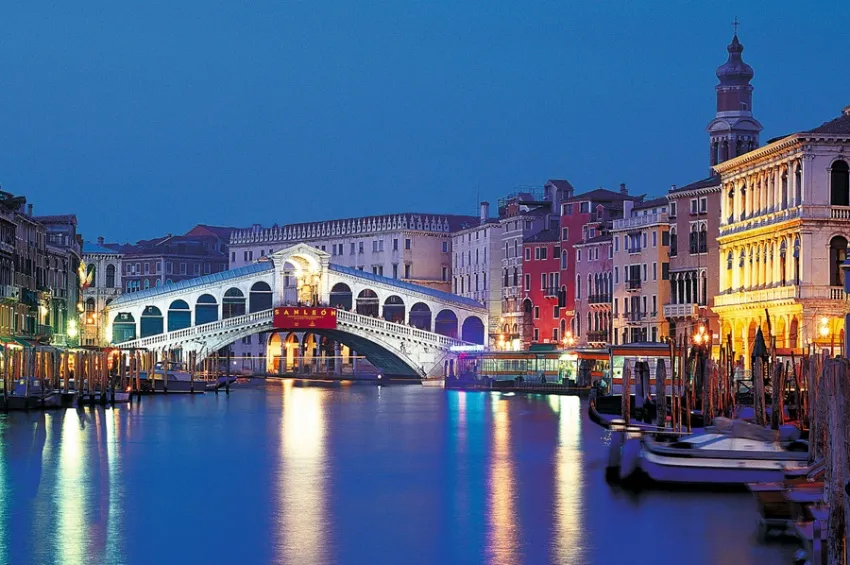
Giacomo Girolamo Casanova was born in Venice in 1725. Both his parents were actors, and he was the first of six children in the family. He entered the University of Padua at age twelve and graduated five years later with a degree in law. Over his lifetime, he was a lawyer, soldier, violinist, courtier, economist, philosopher, writer, and of course, a lover who got into sexual escapades resembling operatic plots.
While visiting Doge's Palace, our guide will evoke his intricate life, including his imprisonment in the palace in solitary confinement for "grave faults committed in public outrages against the holy religion.” He later escaped with the help of a renegade priest.
Casanova's reputation remains until this day, and our guide will recount the most outrageous moments of this "adventurer's" life. Our guide will then take us on a walk through the city streets, passing by the Casino Venier and Casanova's house, finishing up at the Rialto Bridge. After our tour, you can return to the ship at your own pace.
PLEASE NOTE
- The order of the visits can change.
- Times are approximate.
Discover the Biennale Arte at your own pace.
Enjoy what has been one of the most prestigious cultural institutions in the world for the past 130 years. The multidisciplinary art exhibition has always been at the forefront of promoting trendy artistic expressions. The Italian foundation organizes various events around contemporary art, theater, dance, music, architecture, and cinema in Venice, and the Biennale Arte is considered one of the most prestigious art shows in Europe and across the world. Originally, it was the city's participation in the jubilee commemoration of the marriage of Umberto I and Margaret of Savoy. To expose the local population to culture, Venice decided to create a national and biennial art exhibition to be held in the public garden. It soon became clear that the event was a showcase for Italy's internationally renowned artists.
PLEASE NOTE
- The order of the visits can change.
- Times are approximate.
This magical venue, with its opulent ballroom and fresco-covered halls, oozes the romance found in European novels. Just walking up the grand staircase decorated with cherub statues makes you feel like royalty. Traditional Commedia dell'arte characters will greet you before your evening cocktail. We'll then sit down to a delicious dinner accompanied by baroque music.If you'd like to extend the fun after our feast has finished, take a stroll through the narrow streets and along the romantic canals at night. The cobblestone roads bathed in the soft lights create a fairytale-like atmosphere found only in La Serenissima. Sumptuous masques and elaborate costumes pop out of the dark at each turn, like ghosts from the past. Nighttime adds a mysterious aura to the lavish disguises, transforming each mask into fleeting artwork glimpsed under the soft city lights.
PLEASE NOTE
- The order of the visits can change.
- Times are approximate.
You'll set out on foot for the island of Burano. Located outside of the hustle and bustle in the city, Burano is famous for its colorful homes and lacemaking. This photographer's paradise effuses particular charm and invites each visitor to discover its delights. As your tour guide accompanies you down its picturesque streets, you'll see Bepi Suà's kaleidoscopic house, Gianfranco Rosso's home, the adorable Ponte dei Tre Ponti—one of the island's most beautiful spots—the crooked belfry, and so much more. You'll then visit the Lace Museum in the lacemaking school founded by Countess Andriana Marcello in 1872 in an effort to promote the ancient tradition. After the school closed, the Venetian public authorities and the Andriana Marcello Foundation came together for a common project to promote the technique culturally. The old school was then transformed into an exhibit hall and its abundant archives reorganized and cataloged. And this is how the Lace Museum came to be. The museum displays more than 100 examples of the school's impressive work. Personal stories enhance the history of lacemaking in Venice from the 16th to 20th centuries. Included as part of the Civic Museums of Venice, this space currently showcases valuable objects and, during morning hours, gives visitors the opportunity to observe the techniques used by lacemakers keeping the art alive today.
PLEASE NOTE
- The order of the visits can change.
- Times are approximate.
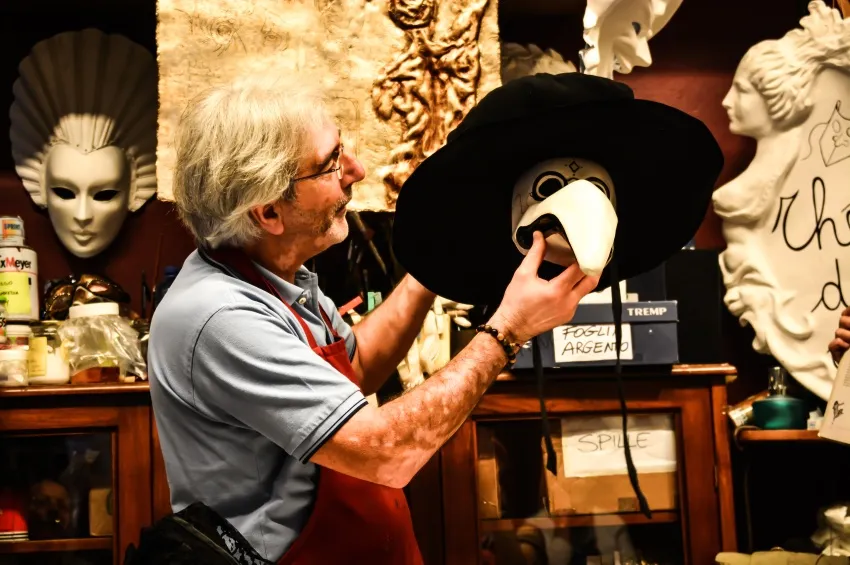
We'll set out for a unique experience at a Venetian mask-making workshop. Once comfortably in place, we'll learn about the secrets and significance of the Venetian Carnival designs. The bases of the beautifully refined masks are made of paper-mâché, straw, fabric, or leather. They are then decorated with paint, beads, gemstones, and metal embellishments. You'll create your own mask you can bring home with you when you're done.Spend some time on your own this afternoon to enjoy the excitement of carnival. Take part in the festivities where exuberance and excitement are at the forefront. Watch the parade of splendid, colorful costumes in the city center. Each day brings a new display and a new winner for the best one!
PLEASE NOTE
- The order of the visits can change.
- Times are approximate.
Enjoy a concert in the private and historic setting of the San Vidal Church.(1) San Vidal Church is a Venetian concert and event hall located at one end of the Campo Santo Stefano city square in the San Marco sestieri. Erected at the end of the 11th century by Doge Vitale Falier, the church was subsequently destroyed by fire almost 20 years later. The church's reconstruction took centuries to complete, finally finishing in the 17th century using the modern designs of the times. The hall has a vaulted ceiling and contains artwork from painters such as Giovanni Piazetta, Guilia Lama, and Vittore Carpaccio. The altarpiece by the latter artist shows Sal Vidal on horseback surrounded by eight saints, with the Virgin Mary and Baby Jesus looking at him from above. Composer Baldassare Galuppi is buried here, although no tombstone marks his final resting place in the hall. The chamber music group Interpreti Veneziani—who play mostly Vivaldi, Mozart, Bach, and Handel at their concerts—now calls the deconsecrated church its home.
PLEASE NOTE
- The order of the visits can change.
- Times are approximate.
(1) Program not yet established. In the event this concert is unavailable, we'll see an alternate concert in another church in the city.
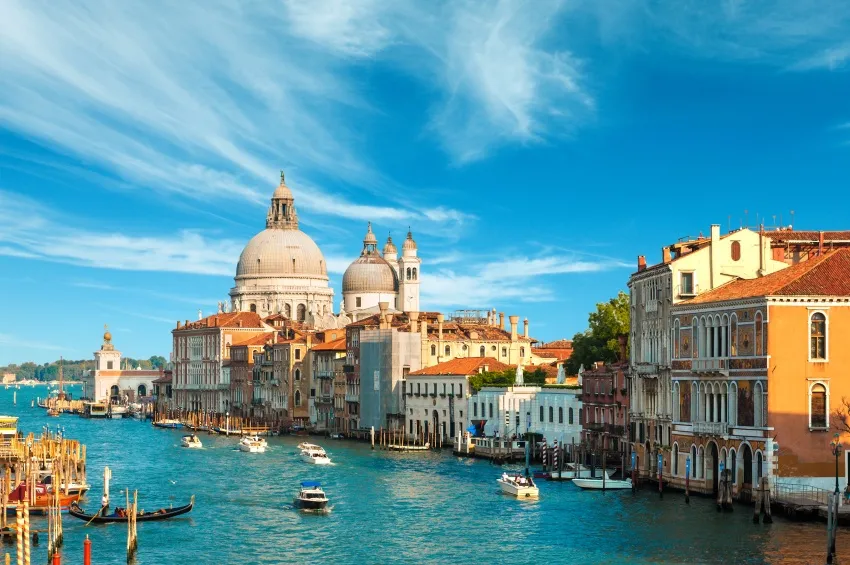
You will meet the guides on the boat. The tour will begin with a historical and artistic introduction to Venice with St Mark's Square, then you will be able to see St Mark's Cathedral (exterior). The Byzantine facades of the Cathedral (one of the most magnificent in the world) will immediately draw your attention. Originally, it was built in the 9th century to hold the body of St Mark, Patron Saint of Venice. Only a few traces of the original structure remain and the present day Cathedral dates from the 12th, 14th and 15th centuries. The exterior, with its domes, pinnacles and wooden horses, contrasts with the shining golden mosaics of the interior. The tour continues with the Doge's Palace, the residence of the Dukes of Venice and seat of the Venetian government from the 9th century until the Republic fell in 1797. Although there are no longer any traces of the 9th century Byzantine structures, the Palace as we see it today, richly decorated outside and inside, dates from the 14th century and is considered by many as the finest in the world. A visit to the top of the famous Golden Staircase will enable you to admire the paintings of Tintoretto and Veronese, to walk through the Grand Council Chamber and out onto the balcony, with its fantastic view. You will walk over the famous decorated Bridge of Sighs, which leads to the prison. The bridge, known in the past as the image of the destiny that awaited the prisoners, today has more romantic connotations. Return to the boat on foot.
PLEASE NOTE
- The order of the visits can change.
- Times are approximate.
- Good walking shoes are recommended.
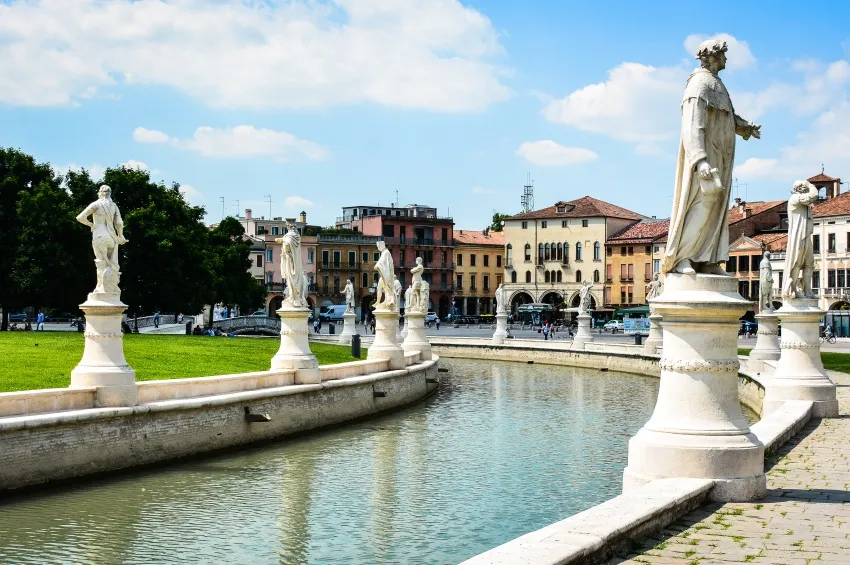
Best known in Christianity as the Saint Antoine of Padua city, it is also famous for its art. Giotto (1267-1337, painter, sculptor and Italian architect) gifted the city of Padua some of his masterpieces, enriching the artistic scenery of the city. We'll start off with a guided tour of the city by coach before visiting the basilica which holds the vault of Saint Antoine. You'll be able to admire Donatello's bronze statue from the 15th century in the square before the basilica. This art piece was a major influence on sculptors of the Italian Renaissance. A guided tour on foot will take you to the Piazza delle Erbe and the Piazza dei Frutti which holds a fresh produce market every day. You'll then see the Palazzo della Ragione (exteriors only) and the Torre dell'Orologio with its astronomical clock dating back to 1344. You'll enjoy some free time to discover this charming city on your own.
PLEASE NOTE
- Good walking shoes are recommended.
- Commentaries inside the Saint Antoine church are forbidden so they would be given before getting in.
- Please dress appropriately to visit the Saint Antoine church.
- Times are approximate.
- The order of the visits can change.
- The departure and return of the excursion are adjusted based on the direction of the cruise:
- VEN: departure from Chioggia / return to Venice
- VMA + VMM: departure from Chioggia / return to Porto Viro
- MAV + MMV: departure from Porto Viro / return to Chioggia
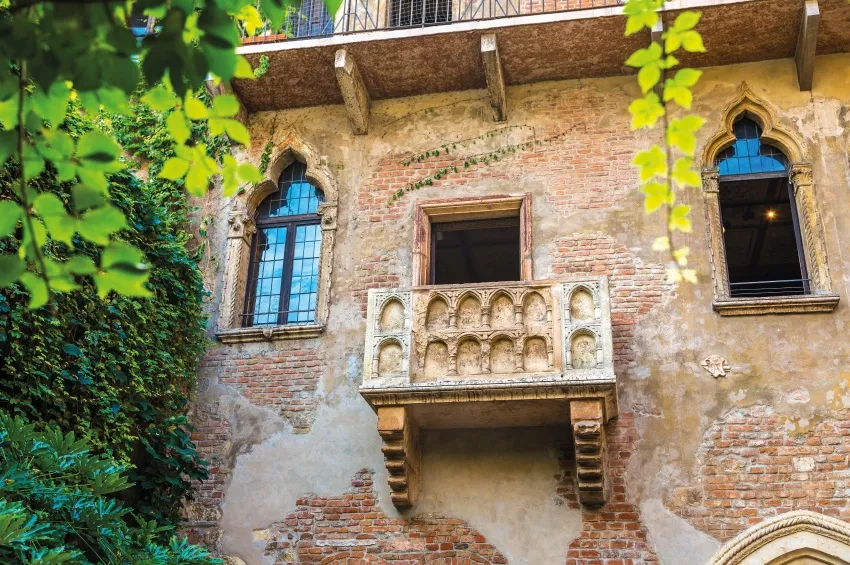
Verona: a splendid city of art, surrounded by traces of ancient history and the mythical dimension bestowed upon it by the tragedy of Romeo and Juliet. The Romans founded the city in 49 B.C. and built many of its grandiose works such as the amphitheater—the third largest in Italy, after the Colosseum and the amphitheater in Capua. In the Middle Ages, the city flourished under the wrathful della Scala clan, who were as much faithful patrons of the arts as they were murderous tyrants. Under Cangrande I (1308-28) Verona conquered Padua and Vicenza, with the poet Dante and the artists Petrarch and Giotto benefitting from the city's patronage. The Scaligers rebuilt the walls during the Middle Ages, embracing a much larger territory in the west and another vast area on the east bank of the river. It's easy to spend a long time simply exploring the narrow streets lined with handsome palazzi that make up its historic heart. The city's museums and churches contain some of the finest works of art.
We'll leave for Verona. We'll set off on foot with our guide to Juliet's House (Casa di Giulietta) to see the balcony where she stood when Romeo declared his love. We'll then walk to the arena—built from the characteristic local pink and white stone in the 1st century A.D.—which seated as many as 30,000 spectators at gladiatorial combats, mock naval battles and other such popular entertainment. If the amphitheater is closed, we'll visit the magnificent Giusti Gardens.
PLEASE NOTE
- Wear comfortable, sturdy shoes.
- The order of the visits can change.
- Times are approximate.

Far from the hustle and bustle of the city, the small island of Burano is known for its colorful homes and traditional lace. Photographers flock to this small paradise to capture its singular charm. Set out with your tour guide and stroll the island's quaint, picturesque streets and discover Bepi Suà's house, Gianfranco Rosso's house, the adorable Ponte dei Tre Ponti, the crooked belfry, and so much more.
PLEASE NOTE
- The order of the visits can change.
- Times are approximate.
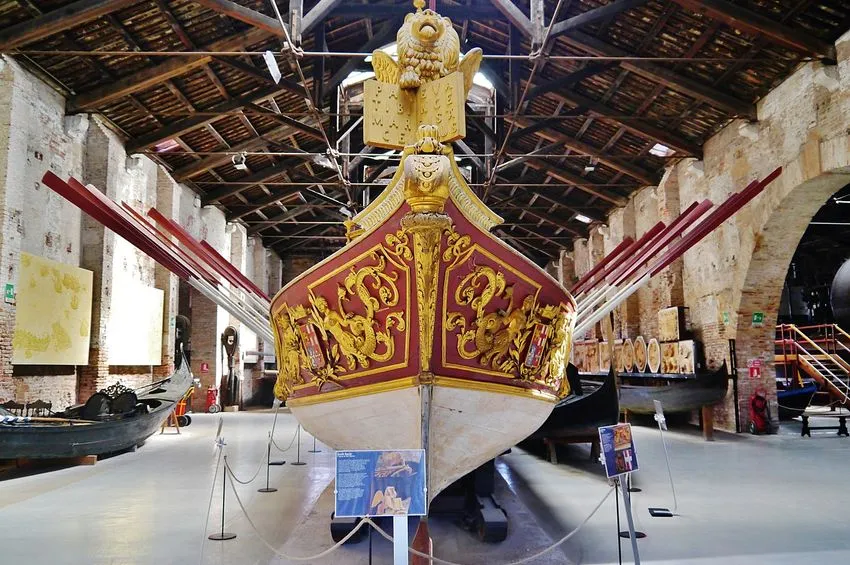
When we think of Venice, we also think of its impressive military and commercial fleets. Whether you know a little or a lot about the subject, the four floors of impressive ship models have something for everyone to enjoy. From the bucentaur ceremonial barge destroyed by Napoleon in 1798 to its famous galleys and gondolas (including Peggy Guggenheim's private, lavish gondola), learning all about the various boats throughout Venetian history is a veritable thrill. Further along, the Ship Pavilion houses all sorts of historical boats that contributed to Venetian grandeur on the sea, including some of the latest military vessels.
PLEASE NOTE
- The order of the visits can change.
- Times are approximate.
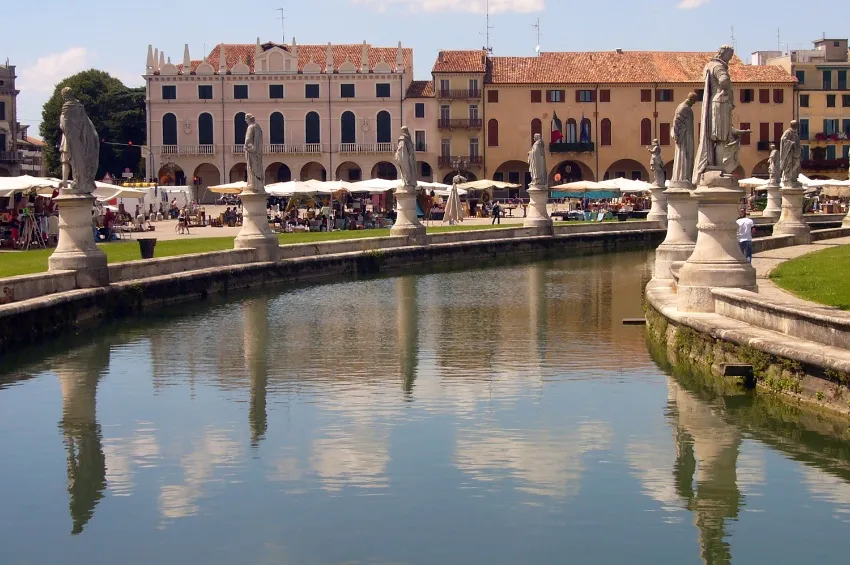
Transfer by coach from Chioggia to Padua. Best known in Christianity as the Saint Antoine of Padua city, it is also famous for its art. Giotto (1267-1337, painter, sculptor and Italian architect) gifted the city of Padua some of his masterpieces, enriching the artistic scenery of the city. We'll start off with a guided tour of the city by coach before visiting the basilic which holds the vault of Saint Antoine. You'll be able to admire Donatello's bronze statue from the 15th century in the square before the basilic. This art piece was a major influence on sculptors of the Italian Renaissance. A guided tour on foot will take you to the Piazza delle Erbe and the Piazza dei Frutti which holds a fresh produce market every day. You'll then see the Palazzo della Ragione (exterior only) and the Torre dell'Orologio with its astronomical clock dating back to 1344. You'll enjoy some free time to discover this charming city on your own. We'll be back on board in Venice.
PLEASE NOTE
- The order of the visits can change.
- Times are approximate.
- Good walking shoes are recommended.
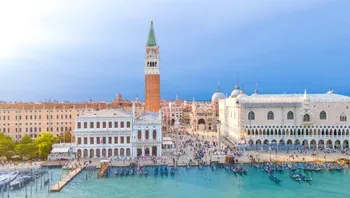
The area around Saint Mark's Square is the smallest and oldest neighborhood in Venice.The square is named after the city's patron saint. Children will adore this offbeat stroll focusing on the canals and bridges, all within a car-free environment.
PLEASE NOTE
- The order of the visits can change.
- Times are approximate.

Meet up with your guide on board. The tour will begin with a historical and artistic introduction to Venice with St Mark's Square, after which you will be able to admire the exteriors of St Mark's Cathedral. The Byzantine facades of the Cathedral (one of the most magnificent in the world) will immediately draw your attention. It was built in the 9th century to hold the body of St Mark, Patron Saint of Venice. Only a few pieces of the original structure remain and the present day Cathedral dates back from the 12th, 14th and 15th centuries. The exterior, with its domes, pinnacles and wooden horses, contrasts with the shining golden mosaics of the interior. The tour continues with the Doge's Palace, the residence of the Dukes of Venice and seat of the Venetian government from the 9th century until the Republic fell in 1797. Although there are no longer any traces of the 9th century Byzantine structures, the Palace as we see it today, richly decorated both on the outside and inside, dates back from the 14th century and is considered by many to be the finest in the world. You will then be able to admire the paintings of Tintoretto and Veronese from the top of the famous Golden Staircase before walking through the Grand Council Chamber and out onto the balcony with its fantastic view over the city. You will cross the famous decorated Bridge of Sighs which leads to the prison. The bridge, known in the past as the symbol of the destiny that awaited the prisoners, has more romantic connotations nowadays. Return to the boat on foot.
PLEASE NOTE
- The commentary on St Mark's cathedral will be given outside, as it is not authorised inside.
- Passengers will be able to enter the Cathedral during their free time. Modest clothing required. A long queue can be expected.
- Wear sturdy walking shoes: the tour is entirely on foot.
- There are a lot of steps to climb at the Doge's Palace.
- With your tickets for the Doges' Palace, you will have free entry to the Correr Museum and library.
- Depending on where the vessel is moored, we will arrange for shuttle boats if necessary to provide access to the Doges' Palace.
- The order of the visits can change.
- Times are approximate.
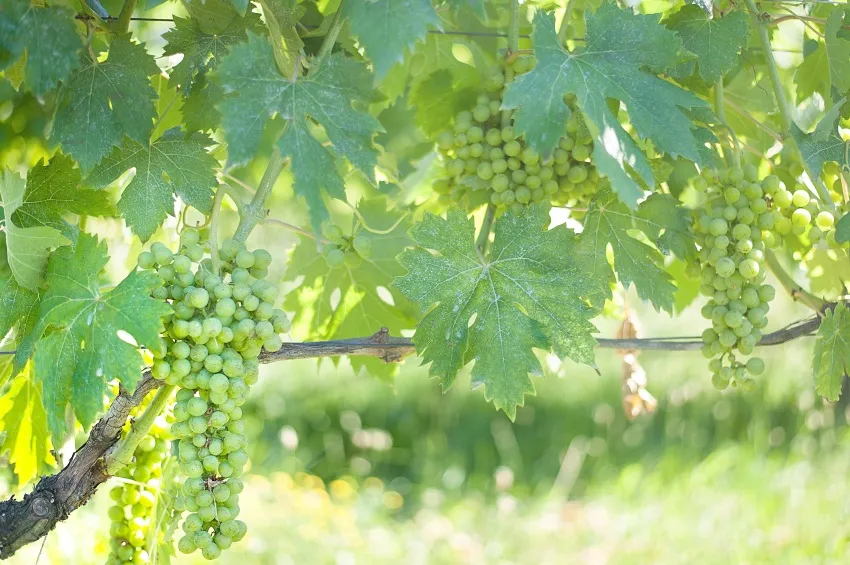
Just one bridge separates Burano from this small hidden vineyard. The story began almost 15 years ago when Gianluca Bisol noticed a vineyard in a garden adjacent to the church. Upon analysis of the vines, he discovered they belonged to the Dorona variety—the wine once served at the banquets within Doge's Palace. The tide peaks occurring naturally in the area (acqua alta) flood the vineyard with salt water, which influences certain characteristics in the Venissa wines. As you visit the grounds, your guide will explain the biodynamic techniques this small winemaker uses to make their pesticide- and insecticide-free products. Of course, we’ll finish up our tour with a tasting.
PLEASE NOTE
- The order of the visits can change.
- Times are approximate.
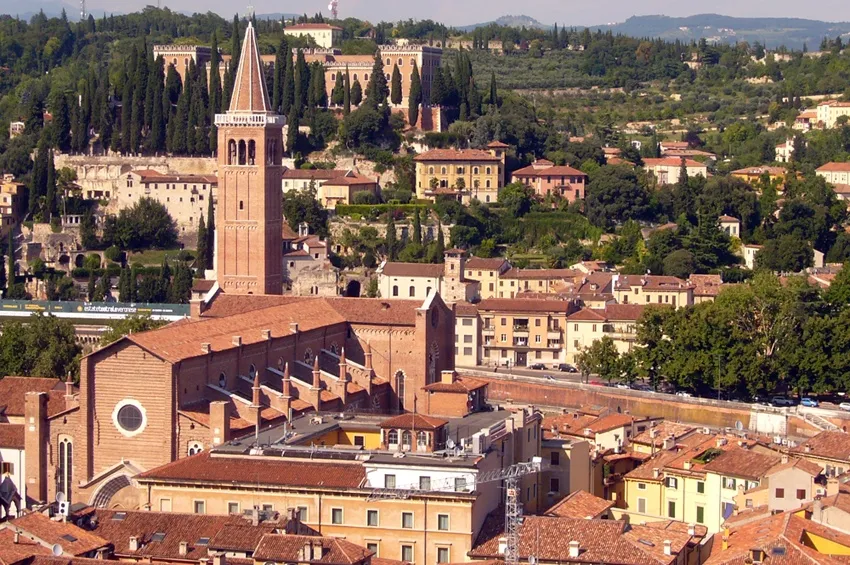
Departure by bus to Verona. Meeting with your guide for a walk through the streets and squares of the city with a focus on Italian culinary specialties. An original way to discover Verona. The guided tour takes place inside the loop of the Adige river which was once navigable and fundamental for the development of the city. Your guide will tell you about the art of gastronomy that has been passed down from the Roman Empire to the new Italian generations through legends and historical stories. At the end of the tour, you will go to a famous pastry shop to taste two sweet specialties accompanied by a coffee or a cappuccino. Duration: 5 hours (Transportation + guide + tasting).
PLEASE NOTE
- The order of the visits can change.
- Times are approximate.
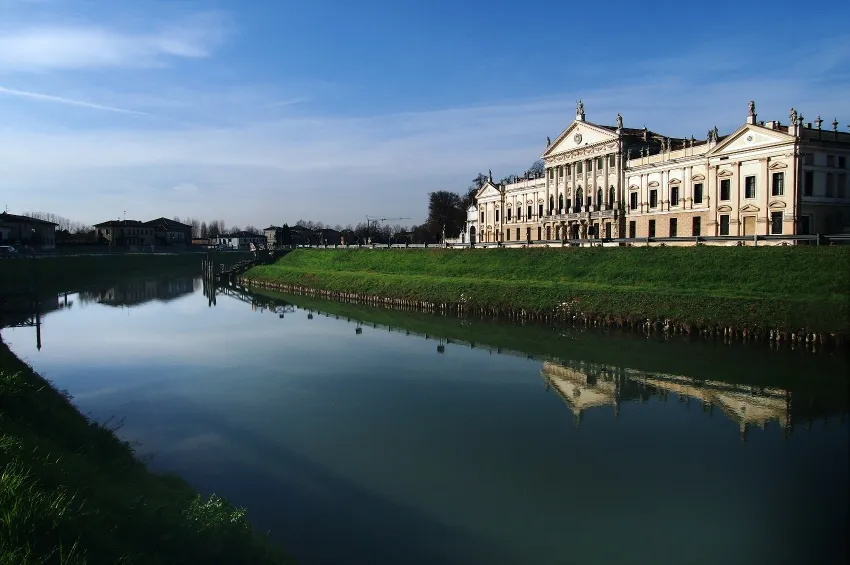
Our panoramic tour along the Brenta River allows you to admire the beautiful countryside and charming villages in the region. During this excursion, we'll visit either Villa Pisani or Villa Foscari (depending on opening hours and availability). Villa Pisani is a veritable palace spread out over more than 27 acres. Its garden with a box-tree labyrinth was named the Most Beautiful Park in Italy in 2008. Villa Foscari, also known as La Malcontenta, was painstakingly restored during the better part of the 20th century to its former grandeur. Designed by architect Andrea Palladio, it is listed as a UNESCO World Heritage site.
PLEASE NOTE
- The order of the visits can change.
- Times are approximate.

Despite Mantua's historic power and influence under the Gonzaga family, Mantua remains a little-known enclave in Northern Italy, but it is one of the richest and romantic cities and still carries pervasive vestiges of its Renaissance past today. We’ll visit the Palazzo Ducale di Mantova (Closed on Mondays, replaced by a visit to the Basilica of Sant'Andrea.) which overlooks the city center. Built between the 14th and the 17th centuries by the noble House of Gonzaga, the property comprises many buildings such as the Castel di San Giorgio which was designed as a defensive structure aimed at protecting the heart of the town, and subsequently converted into the main residence of the Gonzaga family. We’ll also visit the Camera degli Sposi (“bridal chamber”), known for its frescoes executed by Andrea Mantegna as a celebration of the Gonzaga family. We’ll then reach the historic center of the city where you’ll visit the Rotonda di San Lorenzo and the Basilica of Sant’Andrea.
PLEASE NOTE
- Must be booked in advance.
- The order of the visits can change.
- Times are approximate.
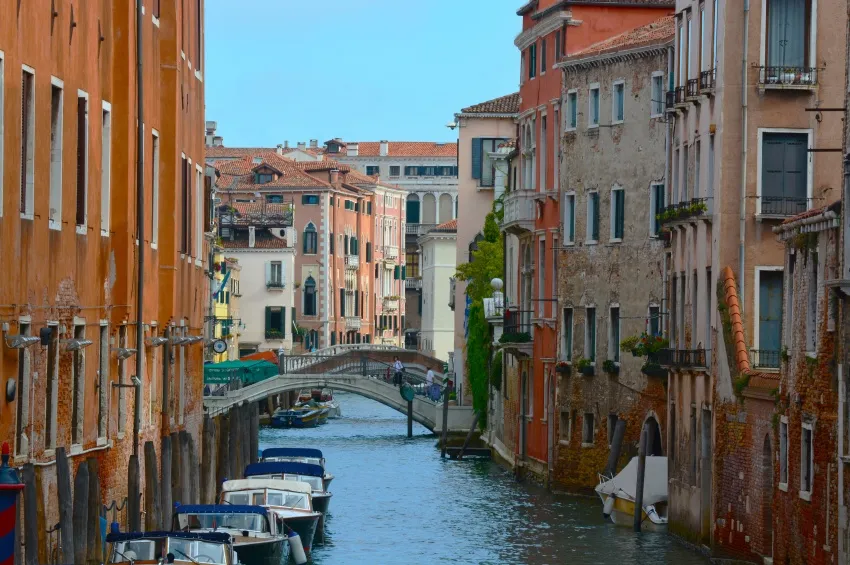
You'll leave on foot from The Zattere or San Basilio Pier. The Dorsoduro District houses some of the most picturesque canals and palazzi and some of the city's great art showcases without the tourist traps that you might expect. The area includes the highest land areas of the city. Our walk will take you along The Zattere to the Spirito Santo and the customs house. The view is absolutely spectacular from this point in Venice, because you can scan the entire Saint Mark's Basin, San Giorgio Maggiore, and the Grand Canal. We'll continue on to admire the exterior of the Santa Maria della Salute church, built during a plague epidemic in the 17th century. The church's dome was an important addition to the Venice skyline and soon became emblematic of the city, inspiring many artists. Our next stop will be Campo Santa Margherita, a large city square in the sestiere of Dorsoduro. You'll be delighted by this heart-warming quarter which has remained humble yet sophisticated with the many palaces overlooking the Grand Canal. After our visit, we'll return to the ship.
PLEASE NOTE
- The order of the visits can change.
- Times are approximate.
The Basilica of San Giovanni e Paolo is located in the Castello District, a bastion of tranquility offering poignant insights into Venetian daily life. It is one of the largest and most important churches in the city.
Known as San Zanipolo in the Venetian dialect, the basilica is a major monument in terms of its size and historical and artistic significance. Construction on the Italian-Gothic style church began in 1246 and was completed in the mid-14th century. Outside, the majestic facade adorned with sculpted doorways and an impressive rose window are simply divine to see. Inside, the large nave, side chapels, and rib vaults are just as amazing. The basilica is also famous for housing the tombs of numerous doges and Venetian personalities—earning it the nickname "The Pantheon of Venice." Works of art by masters such as Giovanni Bellini and Paolo Veronese make it a major historical and artistic treasure in La Serenissima. The Basilica of San Giovanni e Paolo remains living testimony to Venice's past grandeur and a place where architecture, art, and history come together in spectacular fashion.
PLEASE NOTE
- The order of the visits can change.
- Times are approximate.

Departure on foot with the BAFA activity leaders towards the pier. Board a local boat and enjoy a fantastic excursion through the canals and the Chioggia Lagoon. Return on foot to the boat.
PLEASE NOTE
- The order of the visits can change.
- Times are approximate.
- By pre-booking only.
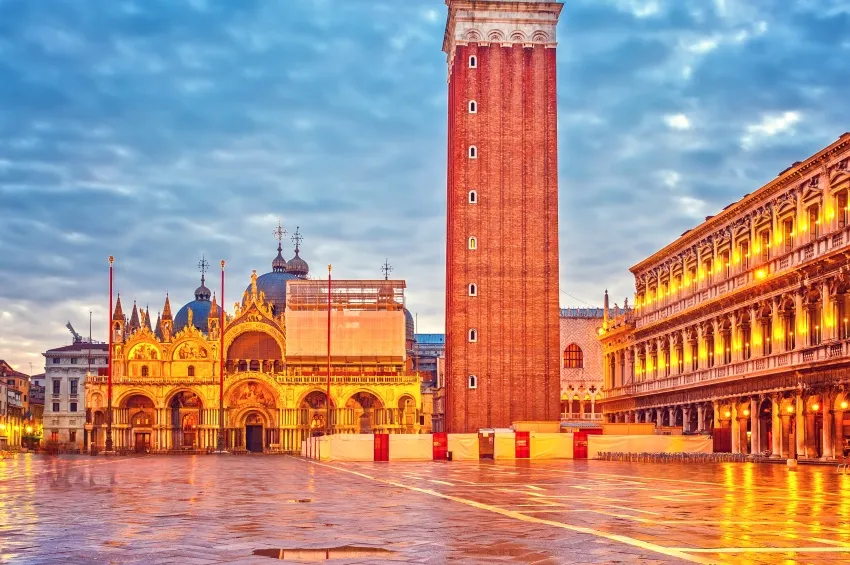
Saint Mark’s Basilica is considered a Byzantine masterpiece, and for that reason, it is one of the most important churches in the city. Construction began in 1063 as a Byzantine-style edifice, which over the centuries was accented with Gothic arches and mosaics. Having seen it throughout the decades as a backdrop to scenes in movies, visitors flock from all over the world just to stand in the spectacular square.
PLEASE NOTE
- The order of the visits can change.
- Times are approximate.
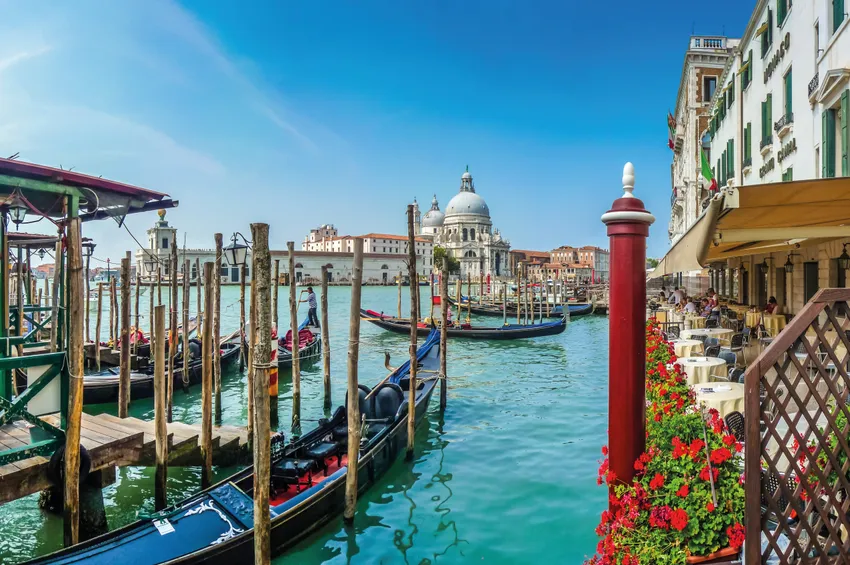
Venetian cuisine is brimming with variety and delicacies. It incorporates the diverse backgrounds of the Venetian population to propose the best the sea and land have to offer in the region. We'll stop off at the Rialto Market in the San Polo District (closed on Sundays). Take your time browsing the stalls brimming with fruits, vegetables, and seafood before having a seat at a typical osteria on the edge of the Grand Canal to snack on delicious cicchetti, Italian tapas-like morsels and buranelli, butter biscuits in the shape of a ring or "S", flavoured with vanilla, rum or lemon, a speciality of the island of Burano in the Venetian lagoon. These tastings will delight your taste buds.
PLEASE NOTE
- The order of the visits can change.
- Times are approximate.
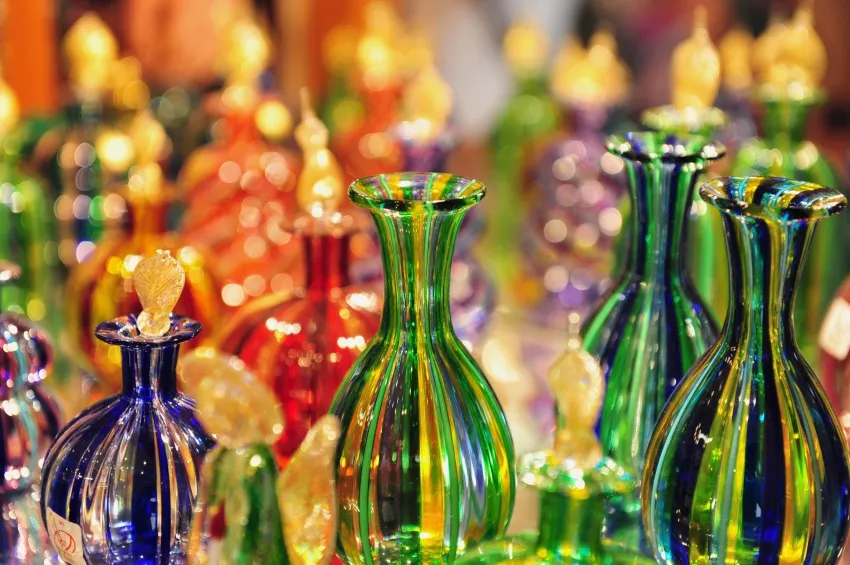
A short boat ride will take us to the island of Murano. The largest island in the lagoon, Murano is famous all over the world for its unique glass. We’ll visit a glassblowing studio to see how it’s done. Take advantage of some free time afterwards to explore the island on your own. Murano is also known for its lovely churches and several remarkable palazzetto.
PLEASE NOTE
- The order of the visits can change.
- Times are approximate.
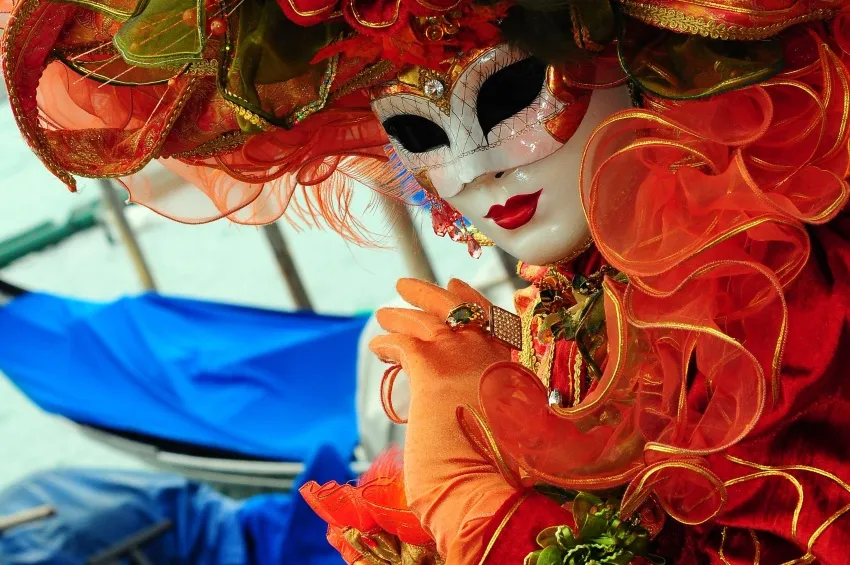
This excursion will lead you to discover the area that has been the heart of handmade gondola production for centuries. You'll visit a gondola workshop and learn all the secrets of this art directly from the master artisans. Back in the 16th-century, the heyday of the gondola, there were upwards of 10,000 of these elegant boats plying the waters of the city canals. Today, there are only 350 remaining, and the job of gondolier is a coveted profession passed down from father to son. Afterwards, we'll visit a Venetian Carnival mask-making workshop. All the masks are individually handmade and feature touches of fantasy and creativity that make them unique items. Most of the masks are signed by the artists, which makes them the perfect souvenir.
Duration : approx. 4:15
- The order of the visits can change.
- Times are approximate.
- These excursions are not proposed for all the cruises and depend on the itinerary.
- If the minimum of 25 participants is not reached, the excursion may be either cancelled or proposed at another rate, depending on the number of participants (to be paid for on board).
- The excursions on the first evening and the morning following boarding are only guaranteed for the passengers who have booked the excursion before the cruise.
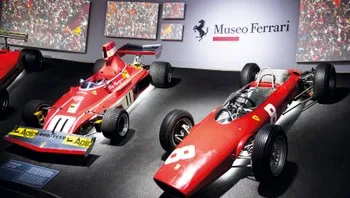
Car lovers will not want to miss this chance! The museum focuses on the life and work of Enzo Ferrari, founder of the Ferrari sports car brand. Their website says it best: “The Museo Enzo Ferrari is more than just a museum. It is a spectacular immersive experience that combines a dizzying mix of unique ingredients. Visitors not only get to admire the stunning cars displayed in the futuristic 2,500 square meter main pavilion but are also treated to a spectacular audio-visual show to tell the magical story of Enzo Ferrari’s 90 years.”
PLEASE NOTE
- The order of the visits can change.
- Times are approximate.
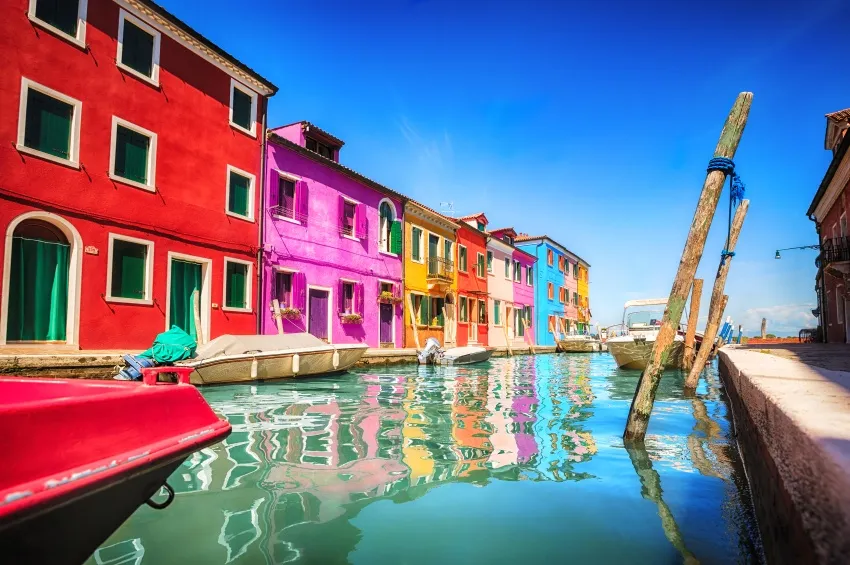
This 32-mile long Venitian lagoon was born from the estuaries of three different rivers and is separated from the Adriatic Sea by a thin sand bar. Venice is located in the midst of the cluster of islands that are in this lagoon. Almost half of them are deserted and the two most prominent ones to the North are the Murano and Burano islands. Our flagship tour will start from the Cornoldi jetty and you'll be able to visit these two islands. Murano is famous for its glasswork and you'll have the opportunity to watch a master glassmaker hard at work. The glass manufacture was transferred to Murano in 1291 after ovens were banned from Venice to protect it from fires. Murano was particularly active in glassmaking in the 16th century, the "golden age" of glasswork thanks to the 37 manufactures and 30 000 inhabitants that were on the island at the time. Glasswork was one of the first Venitian exports and the secrets of this craft were sealed. Glassmaking was considered a privilege that allowed the craftsmen a wealthy marriage. Today, this glasswork isn't a secret anymore and mirrors made in blown glass, chandeliers, cups and other complex art objects are renowned worldwide. Burano will be our next step. This lovely fishermen's village is picturesque with its vividly-colored houses and its canal sides interspersed with breams. Burano is famous for its lace. The heyday of this craft was in the 16th century when Burano was famous all across Europe. A school was created to preserve the traditional lace making technique. Although lace production might not be as popular today as it was back then, some women on the island are still making it. You'll also get some free time on this charming island to discover it on your own. We'll get back to the ship at the end of our tour.
PLEASE NOTE
- The order of the visits can change.
- Times are approximate.
- Good walking shoes are recommended.
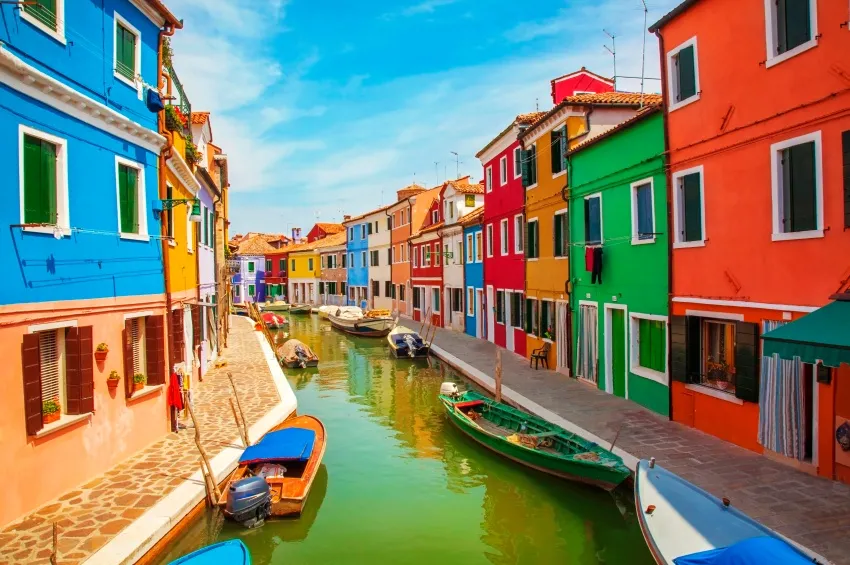
This 32-mile long Venitian lagoon was born from the estuaries of three different rivers and is separated from the Adriatic Sea by a thin sand bar. Venice is located in the midst of the cluster of islands that are in this lagoon. Almost half of them are deserted and the two most prominent ones to the North are the Murano and Burano islands. Our flagship tour will start from the Cornoldi jetty and you'll be able to visit these two islands. Murano is famous for its glasswork and you'll have the opportunity to watch a master glassmaker hard at work. The glass manufacture was transferred to Murano in 1291 after ovens were banned from Venice to protect it from fires. Murano was particularly active in glassmaking in the 16th century, the "golden age" of glasswork thanks to the 37 manufactures and 30 000 inhabitants that were on the island at the time. Glasswork was one of the first Venitian exports and the secrets of this craft were sealed. Glassmaking was considered a privilege that allowed the craftsmen a wealthy marriage. Today, this glasswork isn't a secret any longer and mirrors made in blown glass, chandeliers, cups and other complex art objects are renowned worldwide. Burano will be our next step. This lovely fishermen's village is picturesque with its vividly-colored houses and its canal sides interspersed with breams. Burano is famous for its lace. The heyday of this craft was in the 16th century when Burano was famous all across Europe. A school was created to preserve the traditional lace making technique. Although lace production might not be as popular today as it was back then, some women on the island are still making it. You'll also get some free time on this charming island to discover it on your own. We'll get back to the ship at the end of our tour.
PLEASE NOTE
- Good shoes and windbreaker are recommended.
- Evenings may be cold depending on season.
- The order of the visits can change.
- Times are approximate.
